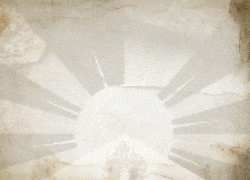Review by Le-Min Lim
 June 9 (Bloomberg) — “Religion is poison,” Mao Zedong reputedly told the Dalai Lama.
June 9 (Bloomberg) — “Religion is poison,” Mao Zedong reputedly told the Dalai Lama.
The spiritual leader had come to Beijing in 1954, the year he turned 19. With Chinese troops in Tibet, he had studied communism and yearned to blend it with Buddhism — the one to meet material wants, the other spiritual needs.
Mao would have none of it. Two years later, he would bomb a 16th-century Tibetan monastery, Lithang, ending any hope of Buddhists finding common ground with communist atheists. The Dalai Lama was devastated, writes Alexander Norman in “Holder of the White Lotus,” a conscientious account of Tibetan religious history since the 14th century.
“It became clear that Chinese Communism entailed attacking the very foundations of the Tibetan way of life,” writes Norman, who has known the Dalai Lama for 20 years.
As tensions spilled over into uprisings, the Dalai Lama would be forced to flee Lhasa in 1959, journeying on foot and horseback across the Himalayas and into exile in India.
The current Dalai Lama is the 14th in a storied Tibetan papacy, Norman explains in this well-researched look at the heroes and hedonists who have held the title down through the centuries. He introduces us to the Great 13th Dalai Lama, who thwarted a British expedition to Tibet, and the sixth, who was anything but celibate and composed erotic poetry.
Tibetan Riots
Though “White Lotus” offers a sound introduction to Tibetan politics, its focus on the remote past may disappoint those seeking to understand the anti-Chinese rioting that erupted in Lhasa on March 10. For a more detailed look at what motivates the current Dalai Lama, pick up “The Open Road” by Pico Iyer, a veteran journalist and author.
The Chinese government has accused the Dalai Lama of stirring the unrest, calling him a “wolf in monk’s clothing.” Yet he has repeatedly urged his people to refrain from violence. According to people Iyer interviews, Chinese leaders should thank the Dalai Lama for remaining a voice of reason amid provocation.
“They call him a separatist, a splittist,” Lobsang Yeshi, a former leader of the Tibetan Youth Congress is quoted as saying. “But if the Dalai Lama weren’t there, the Tibetan struggle would have taken a different turn.”
No doubt a darker one.
Iyer is hardly a dispassionate commentator. His Bombay-born father, a philosopher, got to know the Dalai Lama after he arrived in India as an exile. The book is based on conversations Iyer himself had with the Dalai Lama over three decades.
Pulling Beards
“The Open Road” gently describes the many sides of the Dalai Lama, including the playful. He “can rarely catch sight of a beard or a male ponytail without wanting to tug at it,” Iyer writes.
Yet the spiritual leader’s message is dead serious. At one point in the book, Dalai Lama tells a group of American students that it’s difficult for him to talk about peace while his people are dying; it would be tantamount to manslaughter, Iyer quotes him as saying. He taunts those who pray for world peace but do little to attain it.
The Dalai Lama agonizes over his inability to channel his personal popularity and widespread sympathy for the Tibetan cause into tangible results for his people. He calls himself a simple monk with “neither power nor country,” Iyer writes. Though his influence over Tibetans is never in doubt, his helplessness becomes clear in his tearful meetings with devotees and refugees who have fled their homeland.
`Hyperrealist’
Little is left of the idealistic monk who tried to convert Mao. In his place is a “hyperrealist” who urges his people to seek an “independence within” rather than split with China, Iyer says. He tries to avoid antagonizing China, notwithstanding his high-profile meetings with heads of states, the author says.
Though “The Open Road” could use a dollop of skepticism, this is an elegant and poignant account. Just don’t expect a happy ending.
“Holder of the White Lotus: The Lives of the Dalai Lama” is published by Little, Brown in the U.K. (464 pages, 20 pounds). “The Open Road: The Global Journey of the Fourteenth Dalai Lama” is from Knopf in the U.S. and from Bloomsbury in the U.K. (288 pages, $24, 12.99 pounds).
(Le-Min Lim writes for Bloomberg News. The opinions expressed are her own.)
To contact the writer of this review: Le-Min Lim in Hong Kong at lmlim@bloomberg.net.









